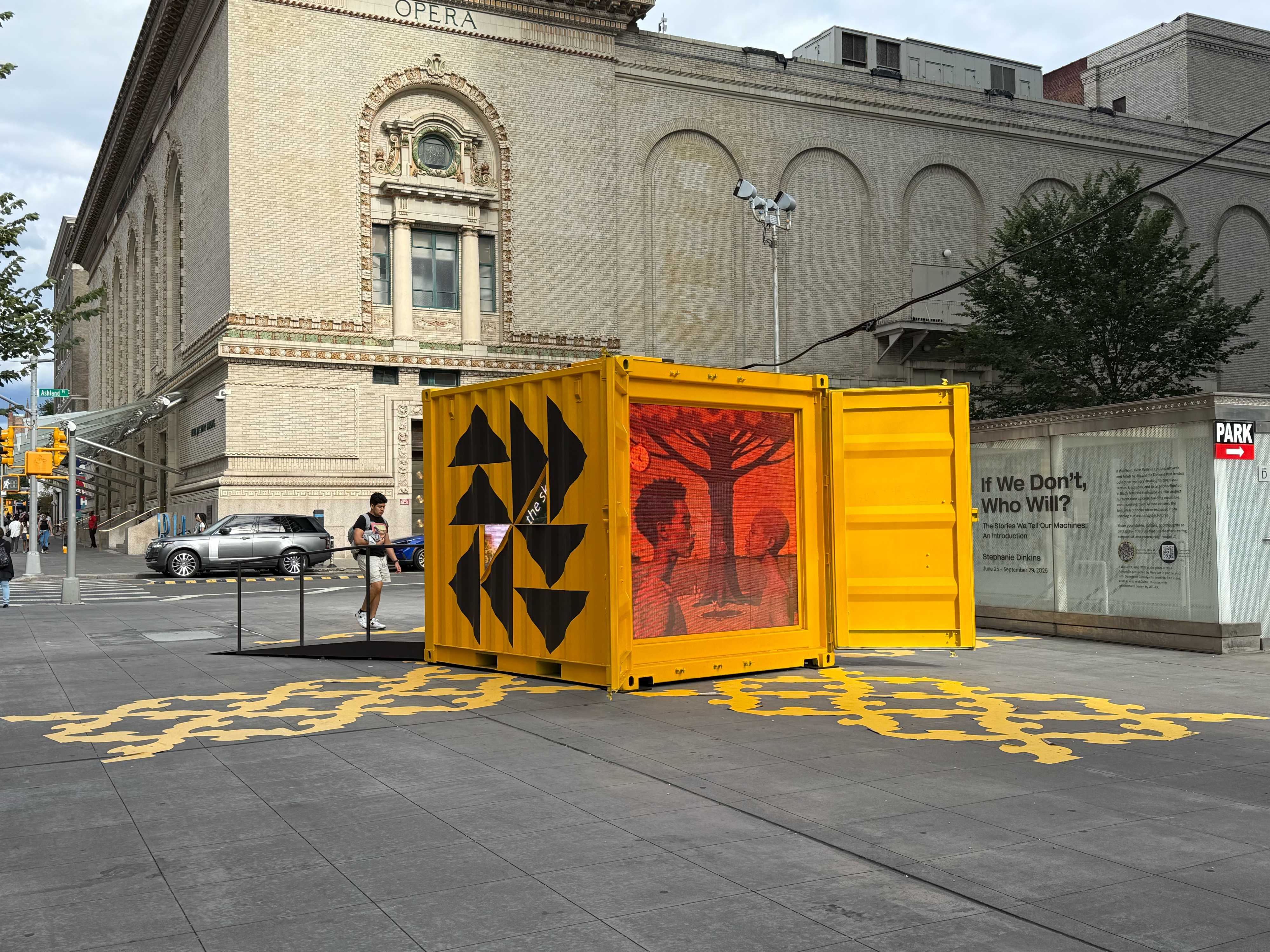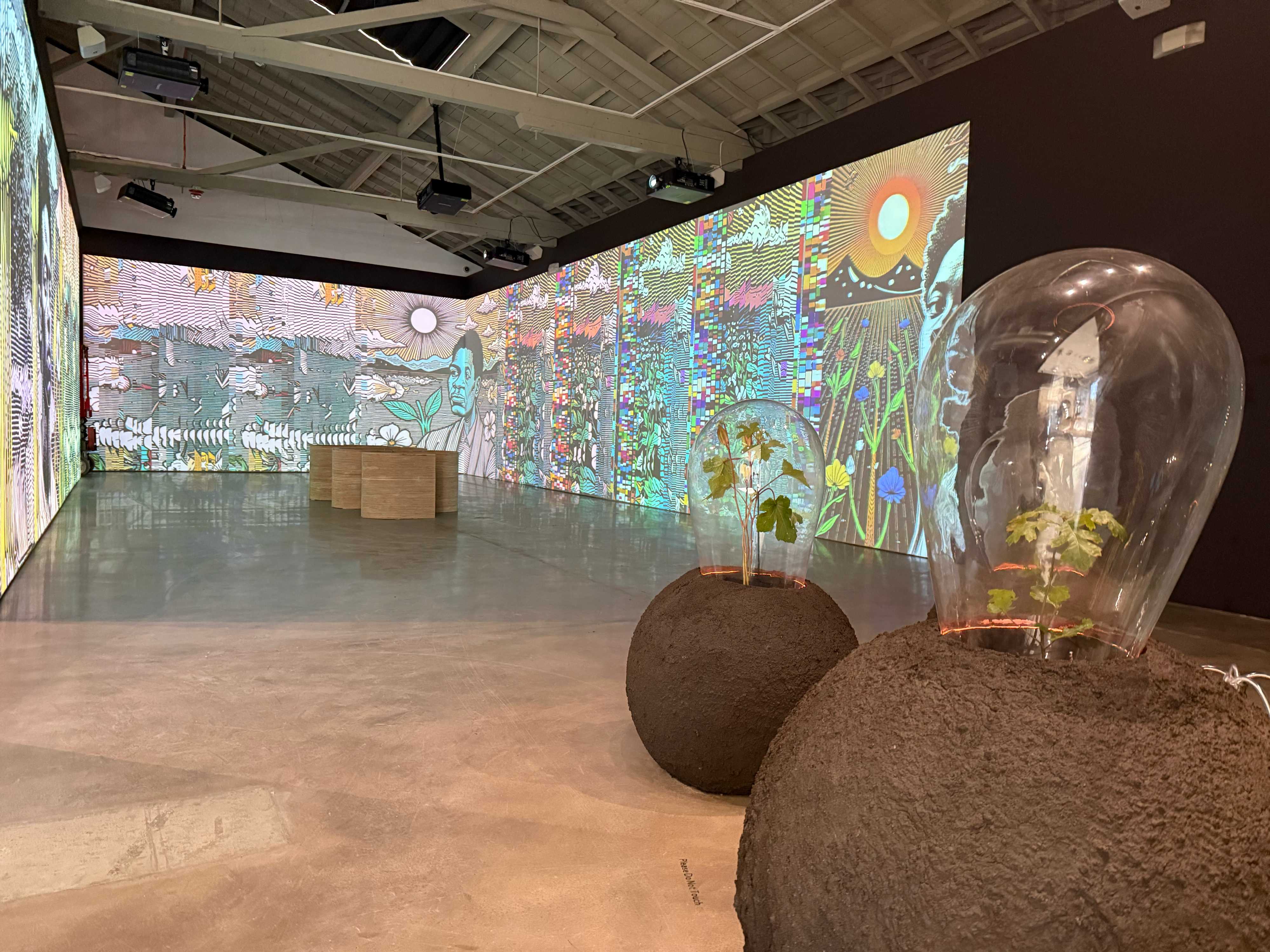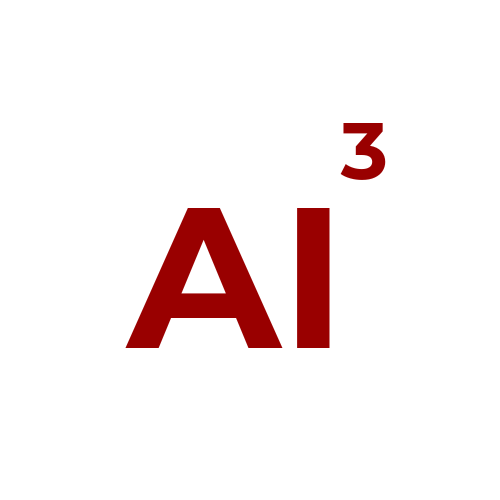
Stony Brook, NY, October 21, 2025 — At 300 Ashland Place in downtown Brooklyn, a bright yellow shipping container glows at all hours, its windows alive with shifting holographic images. Step closer and you’ll see faces, fragments, and dreamlike scenes taking shape in real time — stories from passersby transformed by artificial intelligence. Inside, the space feels more like a living lab than an art installation. Visitors are invited to sit, speak with an artist, and share their own stories through a custom app called The Stories We Tell Our Machines.
This is If We Don’t, Who Will?, the latest public project by Stephanie Dinkins, professor of art at Stony Brook University and a 2023 TIME100 Innovator in AI. The installation, presented by More Art, is part of a larger body of work exploring what happens when the technologies shaping our world begin to know, and care, differently.
For Dinkins, the project began with a simple question: how can people who are often underrepresented in data actively teach machines who they are? In If We Don’t, Who Will?, every story shared, whether through text, voice, or conversation, feeds a live AI system that generates visual interpretations on the container’s outer screens. The technology, a customized version of an open-source image-generation model, is transparent by design.
I use ComfyUI, which anyone can access. I want people to see that these systems aren’t mysterious. You can learn how to shape them.
Even with that openness, Dinkins has found that the defaults of generative AI remain stubbornly narrow. “Almost anything I put in gives me a white person back unless I really work on prompting and adjusting the model,” she said. Her approach involves layering descriptors — “a woman who is black, brown, peach” — and even consulting cosmetics databases to learn how people describe skin tones. Visitors are encouraged to describe themselves “the way [they] want to be seen.” The installation’s structure itself reflects layered histories. Its bright exterior patterns borrow from symbols once used on the Underground Railroad.
Inside the container, the conversation continues. Artists host informal discussions about AI and identity, drawing people in from the busy Brooklyn sidewalks. The app is multilingual (English, Spanish, French Creole, Swahili, Tagalog, Amharic, and more), and the translations are first done with ChatGPT, before being refined with help from native speakers. “It’s better to offer the option, even imperfectly, than not at all,” Dinkins said. “That, to me, honors people.”

While the Brooklyn installation invites the public to participate in shaping AI, its companion work Data Trust, which premiered this fall at the Institute of Contemporary Art San José, extends the idea into biology itself. For the project, Dinkins collaborated with scientists and community members to create a “Cosmology of the Bay,” a collection of Black and brown community narratives that were then encoded into DNA and embedded in living plants.
The question we kept asking was: whose data do we trust? And the answer was, our own.
In Data Trust, those community stories are stored in bacteria that grow alongside okra and California black oak trees — a poetic, literal merging of culture, memory, and environment. The text encoded into DNA can already be decoded back, imperfectly, into fragments of math, memory, and philosophy, or what Dinkins calls “a weird poem.”
Across these works, Dinkins keeps returning to the same thread: that data, when treated as a living form of memory, must be built on trust and participation, not extraction. She’s now collaborating with faculty and students in computer science and art at Stony Brook to begin formulating these collected stories into an open dataset, one that might eventually influence how AI models learn.
“Technology will shift again, probably soon,” she said. “But the need for better data, for our own data, isn’t going away.”
When asked how she envisions the future of art and AI, Dinkins described it less as a destination than as a kind of motion. “It feels like we’re walking on quicksand or lava,” she said. “That means we have to be flexible. We have to keep learning, keep absorbing, keep applying what we know in different ways.”
Later this month, Dinkins will host an Art and AI conference at the Simons Center for Geometry and Physics, in collaboration with the Guggenheim Museum. Her projects remind us that AI is not only about algorithms and computation. It’s also about the stories we feed into it, and the worlds those stories can create.

